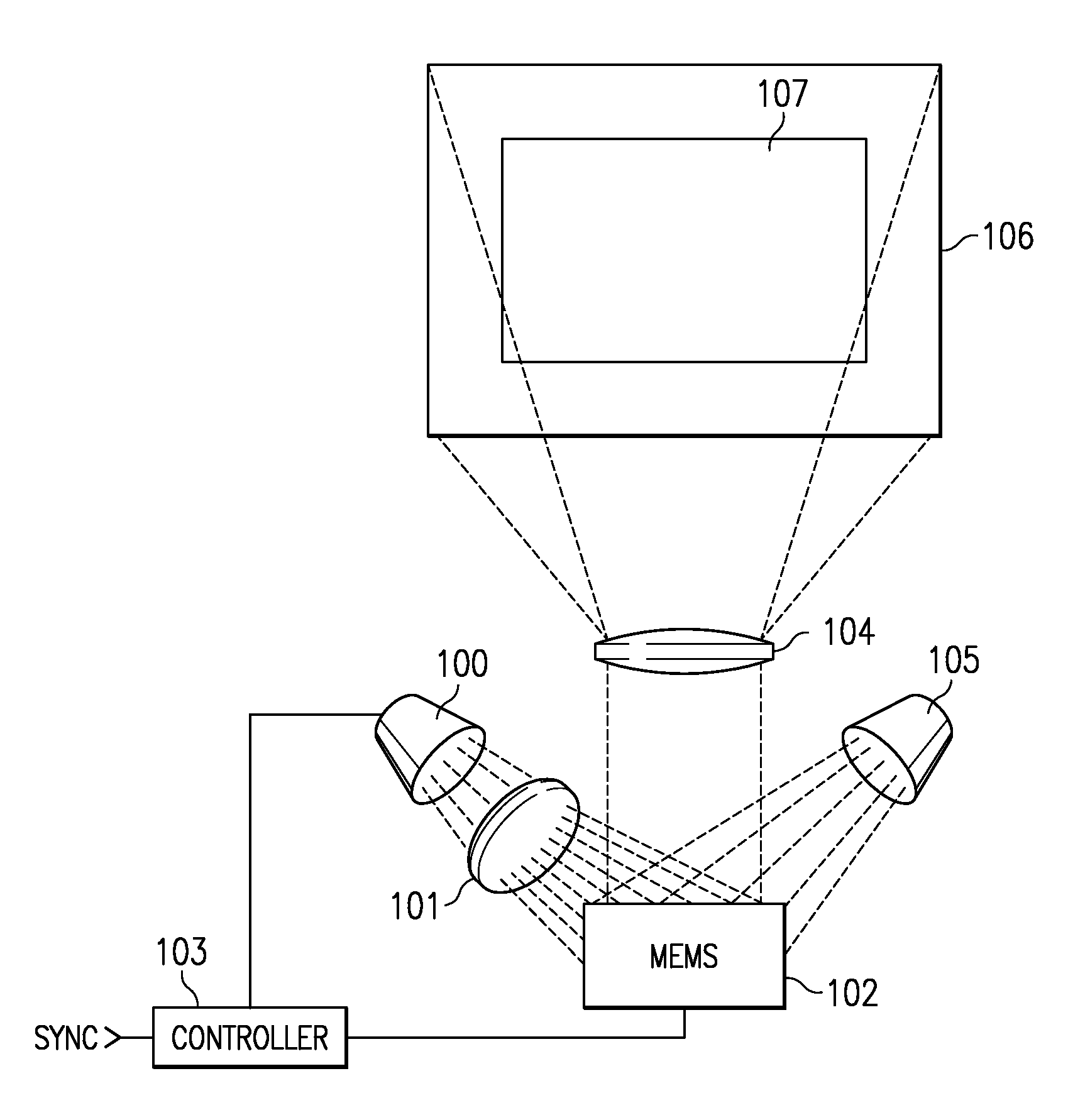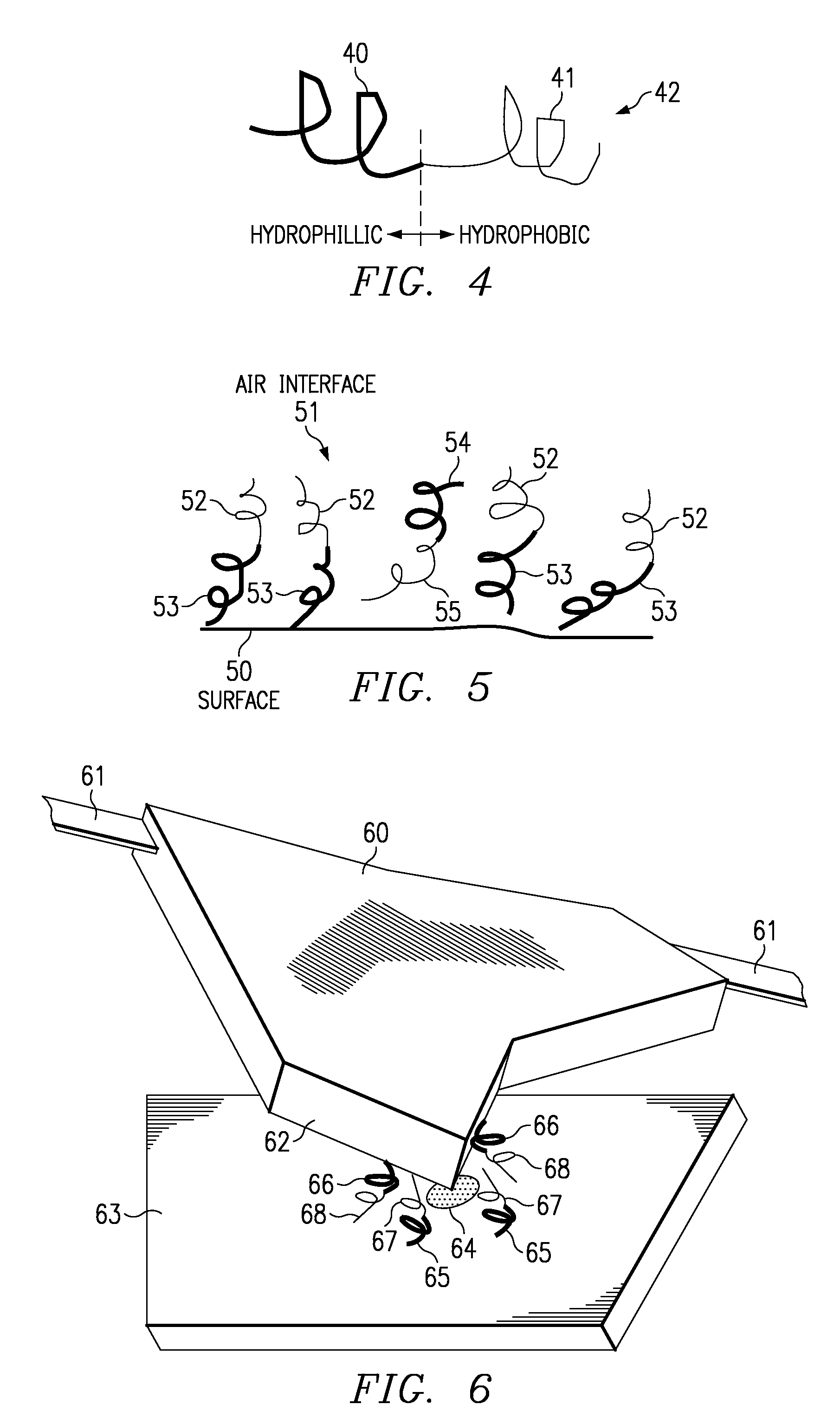Lubricating micro-machined devices using fluorosurfactants
- Summary
- Abstract
- Description
- Claims
- Application Information
AI Technical Summary
Benefits of technology
Problems solved by technology
Method used
Image
Examples
Embodiment Construction
[0021]The present invention uses a fluorosurfactant to lubricate the moving parts of a MEMS device. These fluorosurfactants are readily available materials that can be applied to the surfaces of the devices by a nebulization procedure, which is akin to spraying it on but with very small particles of the material. These lubricants, which are non-corrosive and very compatible with the MEMS fabrication process, remain robust over long extended periods of time.
[0022]FIG. 4 is a sketch describing the fluorosurfactant 42 of the present invention. The surfactant 42 contains a hydrophillic 40 (water like) chain or tail attached to a hydrophobic 41 fluorocarbon tail. While the hydrophillic 40 regions are capable of uniting with or taking up water, the hydrophobic fluorocarbon 41 regions do not take up water, but contain non-reactive halo-carbons; i.e., such as carbon, fluorine, and in some cases hydrogen.
[0023]When applied to a MEMS device, the surfactant molecules will display some degree o...
PUM
| Property | Measurement | Unit |
|---|---|---|
| Hydrophilicity | aaaaa | aaaaa |
| Hydrophobicity | aaaaa | aaaaa |
Abstract
Description
Claims
Application Information
 Login to View More
Login to View More - R&D
- Intellectual Property
- Life Sciences
- Materials
- Tech Scout
- Unparalleled Data Quality
- Higher Quality Content
- 60% Fewer Hallucinations
Browse by: Latest US Patents, China's latest patents, Technical Efficacy Thesaurus, Application Domain, Technology Topic, Popular Technical Reports.
© 2025 PatSnap. All rights reserved.Legal|Privacy policy|Modern Slavery Act Transparency Statement|Sitemap|About US| Contact US: help@patsnap.com



